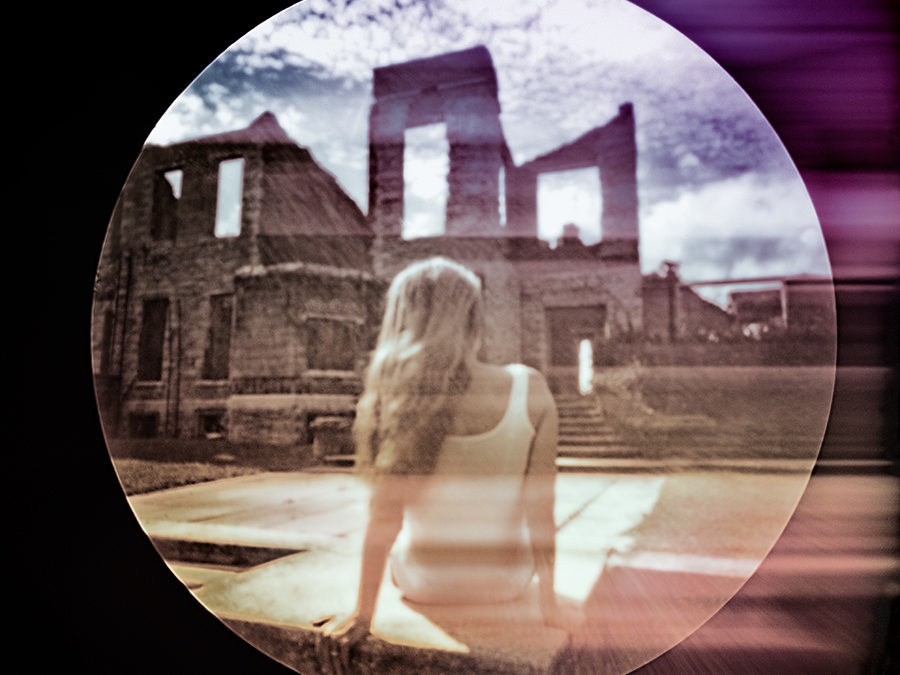
by Pierre Dutertre
Home Built Cameras for a Conceptual Support
 Unknown author. Kodak box camera, circa 1890
Unknown author. Kodak box camera, circa 1890
Having recently embarked into a deep metaphysical concept, one that is engaged in a personal and cathartic journey of self-discovery, I needed a camera system that would support such an endeavor. Following some experiments with a regular 35mm DSLR, as well as some exotic medium format digital systems, it quickly became apparent that a perfect camera system would not fulfill the ephemeral nature of the images desired to illustrate such a complex project.
The key components sought for these photographs involved a round image format, as a temporal disconnect akin to the first Kodak box camera of the late 1800’s, and the soft focus dreamlike quality of the pinhole mechanism.
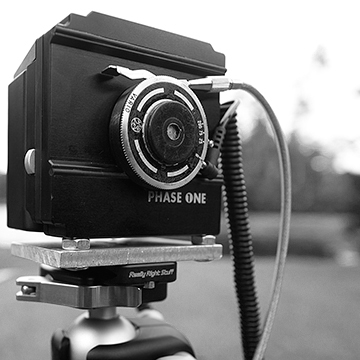 Image # 2: Custom fabricated medium format digital camera
Image # 2: Custom fabricated medium format digital camera
With these precepts established, a custom built camera was undertaken, consisting of a flawed medium format digital array (Phase One P25 with dead pixels and a non functioning back display), a brass pinhole mounted on a 1960’s view camera shutter (that only opens and closes without the regular shutter speeds) affixed to the drilled protective plate supplied with the digital back. This system produces round images due to the close proximity of the wide-open shutter to the array, a soft rendition of the scene from the pinhole and even more interestingly some unpredictable aberrations due to the capture process that involves a dual firing of the shutter, the first to “wake up” the digital back that does not communicate with this mechanical only system, and in rapid succession a second capture for the actual image recording.
The following image clearly shows the results from the twin exposures, the unpredictable aberrations that add a chance element to the photographs, as a subtle reference to alternate planes of reality.
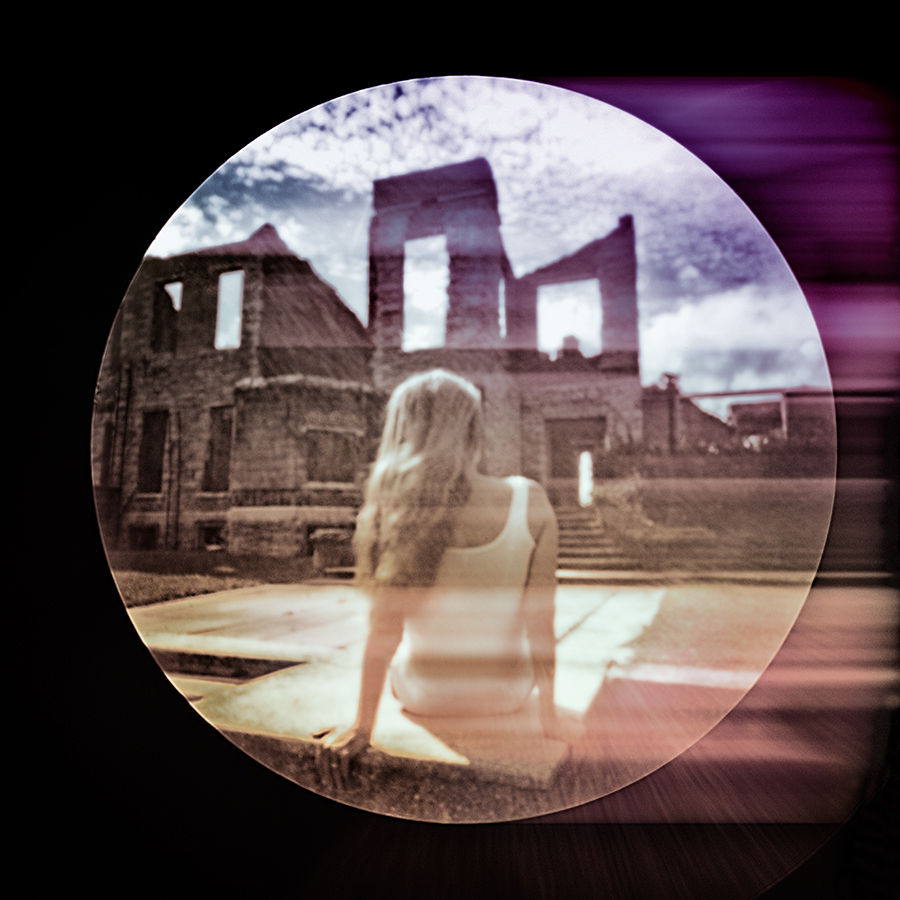 Cathy Dutertre. Disemboweled, “Quest” series, 2013
Cathy Dutertre. Disemboweled, “Quest” series, 2013
Another aspect of this custom camera resides in its propensity to suffer from extreme flare, a flaw that can then utilized for expressive purposes with the addition of artificial battery powered lighting on location (continuous or flash) projected directly into the pinhole opening.
 Cathy Dutertre, Deity, “Behind the Veil” series, 2014
Cathy Dutertre, Deity, “Behind the Veil” series, 2014
In addition, the absence of a viewfinder and the lack of a functioning back display means that the operator has no way of knowing if the subject, in this case myself as a self-portraiture approach, is actually in the frame and compositionally correct within the environment. This additional chance element allows for a slow and methodical process, one that required much experimentation in order to pre-visualize the camera’s field of view. Finally, the color palettes generated by the pinhole can be surprising depending on the quality and intensity of the light at the time of capture, resulting in images that either work well within the concept’s narrative or not at it is often the case.
 Cathy Dutertre. Loss, “Quest” series, 2013
Cathy Dutertre. Loss, “Quest” series, 2013
As in all concepts, the tools utilized to generate images that support the project must be derived from the “What” and “Why” aspects, the intellectual approach needed to achieve a cohesive series of photographs that contain the visual elements supportive of the artist’s intent. In this case, this “round” pinhole camera has proven to be most effective with these communicative efforts, yet complex to operate, unpredictable for the most part, a magnet for dust that needs cleaning several times a day, but always wonderfully surprising, as photography should be, and was in the analog realm.
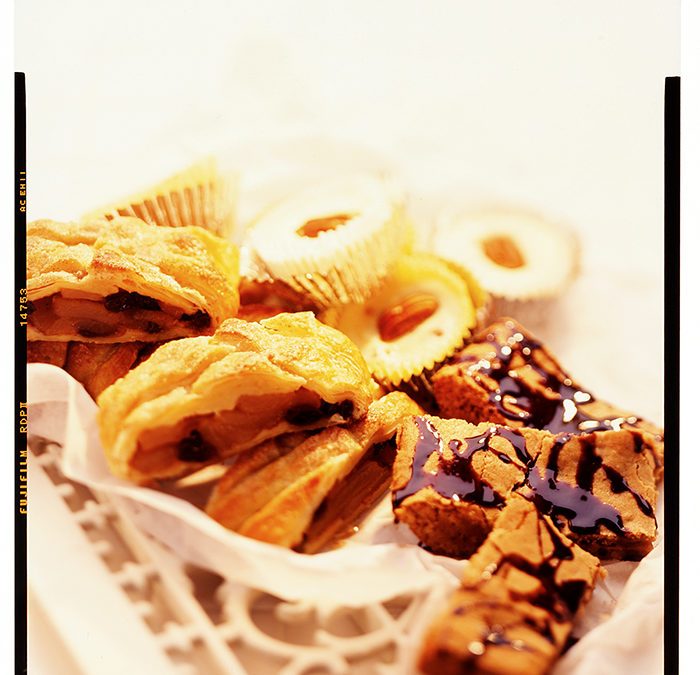
by admin
The Technique of Variable Planes of Focus for Reflective Artistic Outcomes
 Photo by Pierre Dutertre
Photo by Pierre Dutertre
View cameras, with their ability to independently move the front and back standards to generate sharp images within complex environments where the detail of a product or structure has to be fully rendered, have been around for well over a century. Architectural photographers have used the swings, tilts and shift functions of their view cameras to generate accurate, fully focused and standard renditions of interiors and exteriors, ensuring perfect vertical lines and recording the fine details of a particular space or building. Commercial artists have indeed been fortunate to control precise planes of focus to accurately represent products without distortion and with immense or a very shallow depth of field. This was predominant in food photography, where only a small portion of the image would be in focus, thereby creating a visceral and imaginative reaction with the viewer.
However, this ability to precisely control 3-dimensional planes of focus (also known perhaps incorrectly as selective focus) can also be utilized by the creative artist who desires to highlight a particular point of interest in a scene, directing the viewer to an area of interest as intended for a concept-based reflective intent. This technique relies on the ability to move the lens 3-dimensionnally, with the equivalent of the swings and tilts available in a view camera format. There are several alternatives that replicate the front movements of a view camera, from the easily attainable to the exotic. The beginning point resides in a lens baby set-up available for 35mm DSLR cameras.
 Lensbaby, Tilted
Lensbaby, Tilted
The operator can simply twist the lens in multiple directions to generate a fairly precise 3-diemnsional plane of focus.
The results can be very creative in isolating certain parts of the scene in order to create a mood or an ephemeral and mysterious image that denies a full view to the viewer, allowing for directed and controlled points of interest and therefore an artistic communication, resulting in a reinterpretation of the scene by the viewer.
 Photo by Cathy Dutertre, 2012
Photo by Cathy Dutertre, 2012  Mounted Canon PC Type Lens, Tilted
Mounted Canon PC Type Lens, Tilted
Perspective correction (PC) or tilt-shift lenses for 35mm and medium format cameras have been primarily used by architectural photographers in order to control perspectives and distortion, but these exotic prime lenses can also be used to imbue a distinctive style and content to an image.
The Canon TS-E 24mm f/3.5L II allows for shifts and tilts, but can also be rotated to create a similar result of the lens baby, yet preserving a superior optical rendition.
 “White Knight” by Cathy Dutertre
“White Knight” by Cathy Dutertre
At the high end of the spectrum, one can use the X2 PRO system created for medium format and 35mm digital cameras, replicating the precise movements found in a view camera that otherwise may not be the best suited tool.
 X2Pro, Fully Extended
X2Pro, Fully Extended
Although created for studio use the X2 PRO is still manageable on location as in my personal use, despite the bulk and weight of the complete assembly. Mounted with a refurbished Mamiya body, a flawed Phase One P25 digital array, an ancient Mamiya RZ lens and a monopod, this rig has been a mainstay of many of my personal projects, allowing me to precisely control the 3-dimensional planes of selective focus to convey a mood and expressive / reflective artistic outcome. From a banal scene, I am able to extract the essence of a particular subject in order to imbue the image with a communicative message, the real subject matter that transcends the recording abilities of the medium.
 “Dawn” by Pierre Dutertre
“Dawn” by Pierre Dutertre 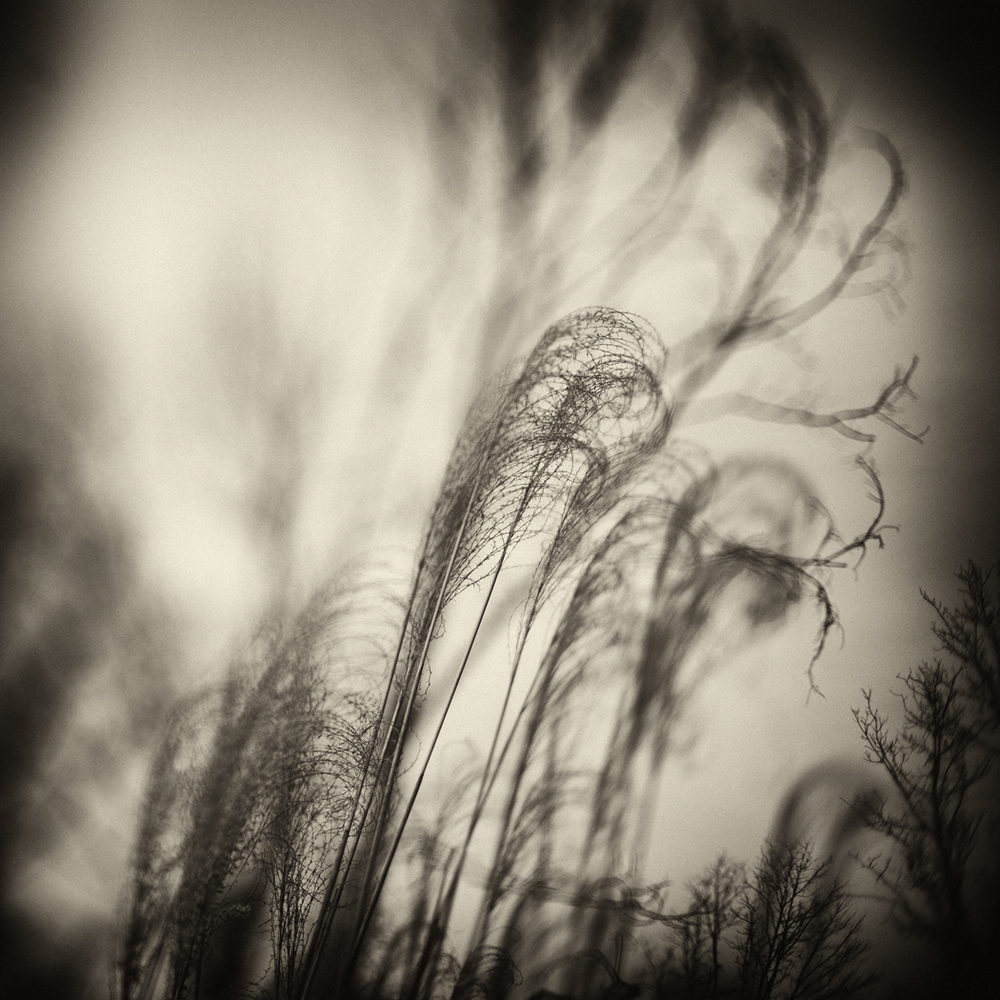 “Weeping” by Pierre Dutertre
“Weeping” by Pierre Dutertre
In effect, the technique of variable planes of focus imitates to some extent our human vision, monocular eyes that have a central point of sharpness, blurred peripheries and adjustable parallel focusing. The ability to push beyond these organic parameters with 3-dimensional planes of focus allows for a creative outcome, making images that are precisely controlled to add a quasi surrealist feel and mood, deconstructing unnecessary elements that do not support the concept, and creating engagement with the viewer as they examine a reconstructed reality as a personal communicative effort on the part of the artist.

 Unknown author. Kodak box camera, circa 1890
Unknown author. Kodak box camera, circa 1890 Image # 2: Custom fabricated medium format digital camera
Image # 2: Custom fabricated medium format digital camera Cathy Dutertre. Disemboweled, “Quest” series, 2013
Cathy Dutertre. Disemboweled, “Quest” series, 2013 Cathy Dutertre, Deity, “Behind the Veil” series, 2014
Cathy Dutertre, Deity, “Behind the Veil” series, 2014 Cathy Dutertre. Loss, “Quest” series, 2013
Cathy Dutertre. Loss, “Quest” series, 2013

 Photo by Pierre Dutertre
Photo by Pierre Dutertre
 Photo by Cathy Dutertre, 2012
Photo by Cathy Dutertre, 2012 




Recent Comments